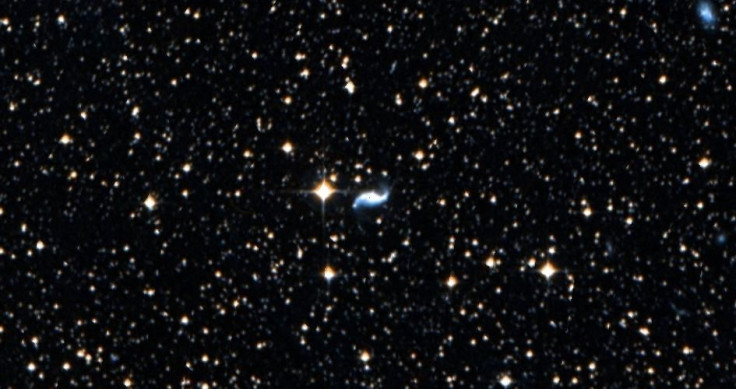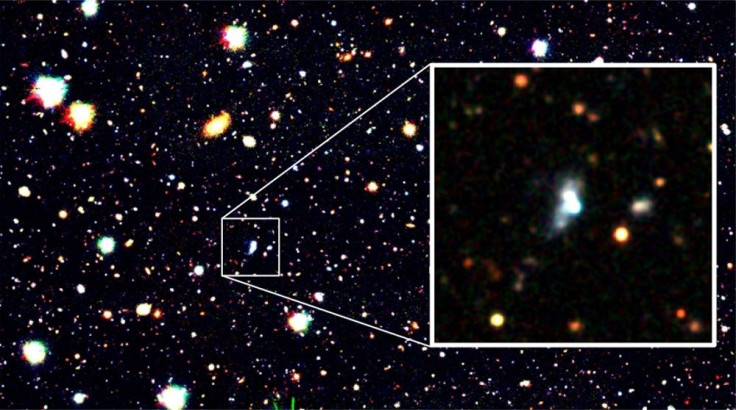ESA Reveals 'Otherworldly' Photo Of A Peculiar Galaxy 271 Million Light-Years Away

KEY POINTS
- The Hubble Space Telescope captured an image of galaxy NGC 34
- NGC 34 is a peculiar galaxy located in the constellation Cetus
- The galaxy is a product of two massive spiral galaxies colliding and merging millions of years ago
The NASA/ESA Hubble Space Telescope has captured a photo of a unique galaxy located approximately 271 million light-years away from Earth.
The galaxy, called NGC 34, lies in the constellation Cetus (The Sea Monster) and has an appearance that is continuously changing due to past events. The object, which is the result of two massive spiral galaxies colliding together, is also known as NGC 17, LEDA 781 or Mrk 938.
A tweet posted Monday by the European Space Agency (ESA) Twitter account showed the beautiful, glowing body of NGC 34 that outshines all other objects surrounding it. The otherworldly image captured by the Hubble reveals the galaxy's translucent outer region that is covered with stars and wispy tendrils, making it look almost like it came straight out of a fairytale.
📷 This NASA/ESA @HUBBLE_space Telescope
— ESA (@esa) October 26, 2020
image shows 'peculiar' galaxy NGC 34. Its odd appearance is caused by its collision with another galaxy millions of years ago 👉https://t.co/pZwu08mIQU pic.twitter.com/hz9xSXR8Vt
With a galaxy as peculiar as NGC 34, it is bound to have an interesting past as well.
"If we were able to reverse time by a few million years, we would see two beautiful spiral galaxies on a direct collision course. When these galaxies collided into one another, their intricate patterns and spiral arms were permanently disturbed," Hubble astronomers said in a statement on the space telescope's website.
"This image shows the galaxy's bright center, a result of this merging event that has created a burst of new star formation and lit up the surrounding gas," the astronomers continued. "As the galaxies continue to intertwine and become one, NGC 34’s shape will become more like that of a peculiar galaxy, devoid of any distinct shape."
In the vastness of space, it is rare for two galaxies to collide with each other. But it can still occur in mega-clusters containing thousands of galaxies held together by gravity in one large region of space, the astronomers said.
NGC 34 was discovered in 1886 by astronomer Frank Muller. Later that year, it was once more observed by astronomer Lewis Swift. The galaxy has a diameter of about 165,000 light-years, Sci News reported.
The Hubble Space Telescope is a large, space-based observatory designed to observe the universe and the events happening within it. The telescope has made countless observations, including watching a comet collide with Jupiter and discovering moons around Pluto.
NASA also recently shared a stunning image taken by the Hubble. On Monday, the space agency posted a photo of interacting galaxies NGC 2799 and NGC 2798, showing the former seemingly being pulled into the center of the latter.
NASA said the interactions between the two neighboring galaxies could eventually result in a "merger or unique formation," possibly similar to NGC 34.

© Copyright IBTimes 2024. All rights reserved.





















